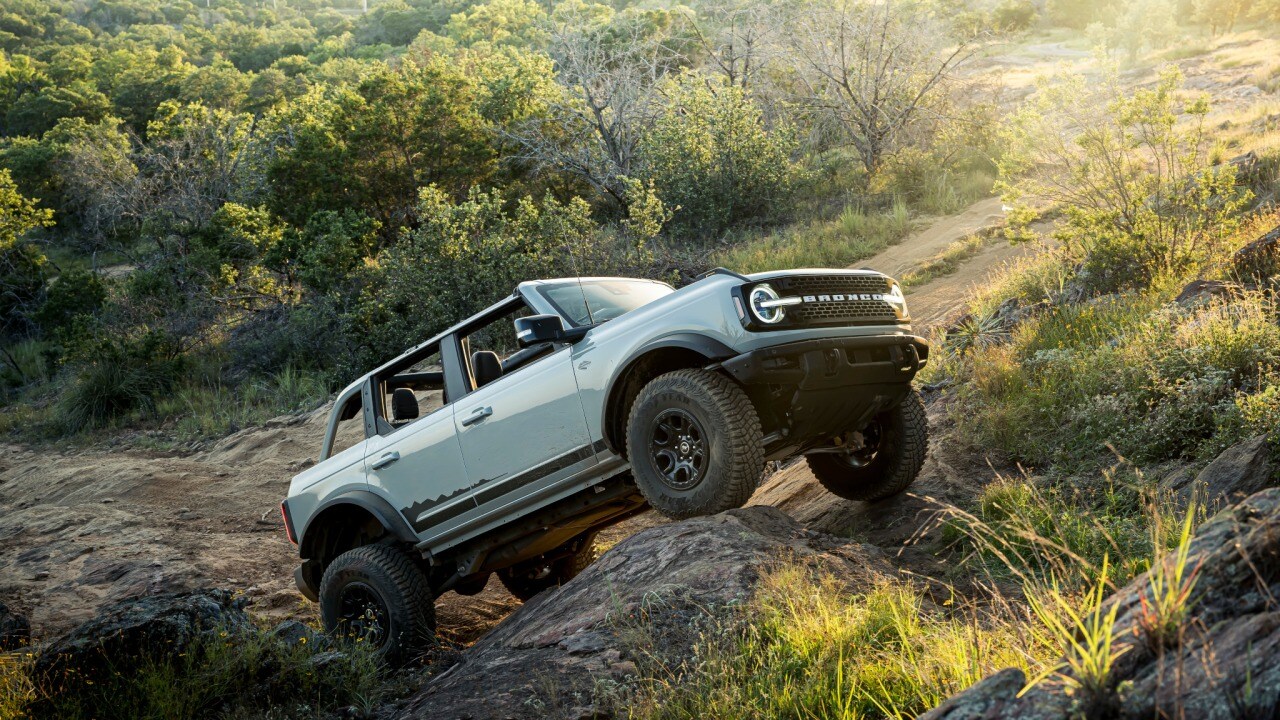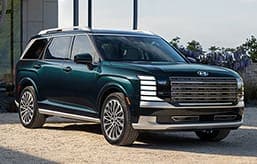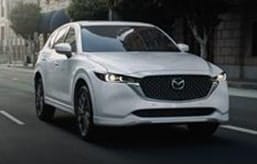Is the Ford Bronco a good value?
The Bronco is available in six trim levels (not including a limited and fully loaded First Edition) that range from approximately $30,000 to $60,000. Generally, the four-door is a $2,500 upgrade.
While climbing up the trim levels brings the usual perks such as available leather seats and a larger touchscreen, a key advantage to the Bronco is that most off-road equipment is available on all versions. All Broncos feature four-wheel drive with a low range and can be equipped with a steel front bumper and locking front and rear differentials. The latter comes as part of the Sasquatch package, which also adds larger tires, a lifted suspension and more aggressive gearing.
Though some off-road hardware is limited to higher-end versions, the broad availability of the Sasquatch package is attractive in contrast to the Jeep Wrangler — its comparable Rubicon equipment is only available near the top of the model line.
How does the Bronco drive?
Often specialty vehicles come with sacrifices to on-road drivability. Fortunately, this is not a concern with the Bronco. Thanks to an independent front suspension, the Bronco has tight and accurate steering and an agreeable ride.
The standard turbocharged 2.3-liter four-cylinder engine (300 horsepower and 325 lb-ft of torque with premium fuel) provides sufficient acceleration whether it's combined with the standard seven-speed manual or the optional 10-speed automatic. The larger and optional turbocharged 2.7-liter V6 (330 hp and 415 lb-ft of torque with premium fuel) makes a satisfying improvement but isn't a necessity.
Though only available with the four-cylinder, the manual transmission is unique in that it has a crawler gear, noted by a "C" on the shift pattern between reverse and first. Sometimes referred to as a "granny" gear, the crawler has a numerically high (or short) ratio that means the engine has to spin far more times to turn the wheels. When combined with a similarly short final drive (or axle ratio) and with low-range engaged, the resulting crawl ratio allows the engine to work even harder at lower vehicle speeds, which improves low-speed off-road maneuvers. Approach a steep hill, ease off the clutch, and the Bronco simply climbs up. It's so slow in this gear that you could release the clutch, get out and walk faster. (Note: Don't do this.)
While the 10-speed automatic can't brag about crawl ratios to the same degree, it remains the one to pick for most buyers. Having 10 gears to pick from allows lots of flexibility, including taller gears for the freeway that reduce engine noise and improve fuel economy. The automatic transmission also includes access to additional technology aids that improve the off-road experience, such as a low-speed off-road cruise control and a clever braking system that improves agility (covered in greater detail below).
How comfortable is the Bronco?
Driving on a trail requires driving to a trail, and the Bronco's comfort means you arrive without fatigue. The steering is easy to keep straight. It has none of the float or tendency to wander, making the Bronco far more confident and relaxing at freeway speeds than the Wrangler.
The nature of a removable roof and frameless windows means you should anticipate some road noise, but it's still easy to hear the radio or maintain a conversation at 70 mph without raising your voice.
The seats are soft and offer generous adjustment ranges, and the large windows provide decent outward views. The hood seems tall, which might make judging overhangs a bit tricky for some people. Fortunately there are tie-downs that sit on the left and right sides of the hood, and they give a good perspective of the fenders' position relative to traffic or the trail.
How's the Bronco's interior?
It's functional and intuitively laid out. But more importantly, it just looks cool. A broad horizontal dash dominates the cabin, with strategically placed and rubberized grab handles that your passengers can use to help keep themselves in place.
It might seem strange at first to see the window and mirror controls located ahead of the center armrest, but it makes sense considering that the doors are easily removed. Frameless windows keep the doors compact, enough so that you can store all four of them in the back. And because the side mirrors are mounted on the hood, they remain in place when the doors are removed. In another welcome touch, Ford has also developed side curtain airbags that hide in the roll bar, a safety addition absent in the Wrangler.
The soft-top and hardtop roofs are also easy to remove. The soft folds back like a convertible's, and the hardtop comes off in large panels. There's no center overhead bar connecting the Bronco's middle roof pillars (the B-pillars) like you have in the Wrangler, so you get an unobstructed view of the sky when you look up. Remove the doors and roof, and the result is just fun.
Some trim levels feature rubberized non-carpeted floors with drain plugs — remove them and you literally see the ground underneath. After a day in the great outdoors, you can hose off the interior in Broncos so equipped. You can also option for carpeted floors as well.
How's the Bronco's tech?
The Bronco's retro styling vibe doesn't mean it's stuck with AM radio and a cassette deck. Android Auto and Apple CarPlay smartphone integration is standard and includes wireless functionality so you can connect up your phone's apps to the touchscreen without having to use a USB cord. The center touchscreen (8-inch standard, 12-inch optional) reacts quickly to inputs and commands.
An optional navigation system features trail recommendations, and the available 360-degree exterior camera system's comprehensive views help when picking the right line on a trail or when parallel parking.
The Bronco features a host of electronic aids for off-road driving. Trail Control functions like a slow-speed cruise control that can be adjusted in 0.5-mph increments. Ford takes it further with Trail One-Pedal Drive, a feature that automatically applies the brakes as you release the gas pedal. Doing so alleviates the need to try to control both pedals simultaneously during tricky maneuvers on rocks, and it's impressive how smoothly the process happens.
Trail Turn Assist is the real highlight. When it's activated, the Bronco applies the brake of the inside rear wheel as you turn the steering. That braking keeps the wheel from turning, which then acts as an anchor point that the entire Bronco pivots around. This not only transforms tight three-point turns on a trail into simple steering movements, but it also acts like a hilarious quasi-donut mode.
Like the Wrangler Rubicon, the Bronco Badlands trim features a front anti-roll bar disconnect. Imagine an off-roading situation where one side of the front suspension is fully compressed while the other front wheel is hanging in the air. Pushing a button in the cabin disconnects the anti-roll bar that connects the two ends, greatly increasing articulation and letting that suspended wheel potentially drop back down to the ground so that it may get traction. The Bronco's advantage is that you can activate the disconnect when the suspension is already under load. The Wrangler's must be activated on flat ground.
While all of these features can be activated independently, the Bronco also has drive modes (Ford calls them GOAT, a callback to one of the original Bronco's code names, for "Goes Over Any Terrain"). Along with varying the stability control and engine response, these also engage the appropriate transfer case setting, diff lock and anti-roll bar disconnect, if equipped.
How's the Bronco's storage and towing?
The Bronco's cargo gate swings out to the passenger side a bit past 90 degrees and stays held in place with a strut. Shutting the door can take some effort, depending on the angle the Bronco is sitting at and whether you have the full-size 35-inch spare tire that comes with the Sasquatch package. With the hardtop, the rear glass folds up and out of the way easily. The rear of the soft top doesn't seem to move up as far, and it needs to be held in place with a prop rod. Considering how easy it is to fold rearward, this may be an acceptable compromise.
With the rear seats up, two-door Broncos offer 22.4 cubic feet of storage space and four-door versions have either 35.6 cubic feet (hardtop) or 38.3 cubes (soft top). That makes the larger Broncos more accommodating than the Wrangler, at 31.7 cubic feet regardless of door number, but less so than the 4Runner at 47.2 cubic feet. The Bronco's cargo area features tie-down points that are cheekily labeled with lassos.
An optional tow package adds a 2-inch Class II receiver and four- and seven-pin connectors, though a trailer brake controller is not available currently. As equipped, most two- and four-door Broncos have a tow rating of 3,500 pounds, which matches the four-door Jeep Wrangler with its optional tow package. (Two-door Wranglers can tow 2,000 pounds.) The Toyota 4Runner offers more capability with a standard receiver hitch and a 5,000-pound rating on all trim levels.
How economical is the Bronco?
The Bronco gets an EPA-estimated 21 mpg in combined city/highway driving with the four-cylinder regardless of transmission, while the automatic-only V6 gets an estimated 19 mpg combined. When the Bronco's equipped with the Sasquatch package, the figures drop to 18 mpg and 17 mpg for the four- and six-cylinder engines, respectively. These figures are slightly lower than the Wrangler's estimates with comparable engines and equipment, but they're generally better than those for the Toyota 4Runner.
Edmunds says
The 2021 Ford Bronco is the real deal. It delivers strong off-road performance and technology along with superior on-road refinement versus its rivals. Its wealth of configurations, both from the factory and in accessories, allows owners to tailor theirs as they see fit. Combine all this with fantastic styling and you end up with one highly desirable package.



 by
by